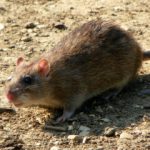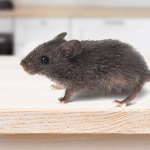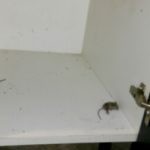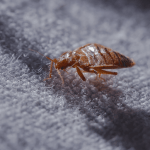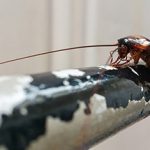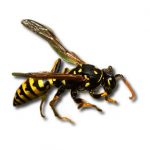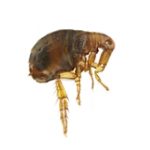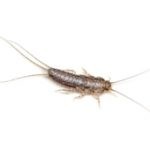Everything You Need to Know About Mice Nests in the House
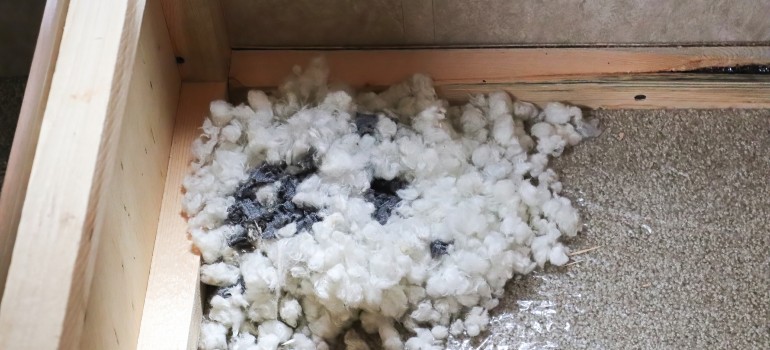
Image: Amelia Martin/Shutterstock
Mice are resourceful creatures that look for warm, safe places to nest. In addition to multiplying rapidly, they cause damage and pose a serious health risk.
There are different types of mice like the plain field mouse, the deer mouse or the harvest mouse. Only the house mouse, however, will try and enter your home and build nest, as this is the most adaptable kind from all the others.
If you hear scratching sounds at night, or find chewed-up materials, it’s important to identify a mice infestation early. Here are some tips on identifying and removing a mice nest in the house. Keep your home rodent-free with these effective prevention tips!
What does a mouse nest look like?
A mouse nest is a small, messy collection of soft materials that mice gather to build a safe and warm home. Most often, it is hidden inside walls, attics, basements, or behind furniture in dark, undisturbed areas. The nest is generally loose but surprisingly sturdy, with a softer, more insulated inner portion that cradles the pups and a coarser outer layer that protects the baby mice from predators.
Why do mice nest?
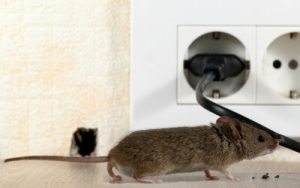
Mice have many reasons to nest. The most common ones are to breed and protect the litter, to keep themselves warm, to store their food and to safeguard their young ones against predators. Once the mice have settled in a house, the male and female are highly motivated to build a proper nest because, just like all the other animals, they are doing their best to survive.
What are mice nests made of?
Mice nests are made of soft, shredded materials that provide warmth and comfort for the rodents. Mice are resourceful and use readily available materials from their surroundings. Since the nests are made for their offspring, they have to be as comfy as possible. A nest consist of things that the mice have scavenged from around the house. For example:
- Paper – Shredded newspapers, tissue, or cardboard.
- Fabric – Pieces of cloth, cotton, or upholstery stuffing.
- Insulation – Fiberglass or foam from walls and attics.
- Plant matter – Dried grass, leaves, or straw.
- Plastic and foam – Bits of packaging materials.
- Pet hair and feathers – Soft materials collected from household pets or birds.
If you notice torn newspapers or gnawed fibreglass, then most likely a mouse is trying to build a nest right under your nose.
Signs of a mice nest in the house
Mice are nocturnal creatures, meaning they are most active at night. If you hear scratching, scurrying, or rustling sounds within walls, ceilings, or under floors, it could indicate a nearby nest. These noises often come from nesting sites where mice build their colonies.
- Shredded materials and nesting debris – As we mentioned, mice create nests using soft materials such as paper, fabric, insulation, and dried plant matter. Finding shredded newspaper, chewed cardboard, or torn upholstery near dark corners, inside cupboards, or behind appliances suggests nesting activity.
- Foul odour and Ammonia-like smell – A strong, persistent musky odour, particularly in confined spaces, is a key indicator of a mice nest. The smell comes from their urine, which they use to mark territory and pathways. Over time, this smell becomes more pungent as droppings and nesting materials accumulate.
- Mouse droppings – Mouse droppings are small, dark, and pellet-shaped, measuring around 3-8mm. They are commonly found near nesting sites, along skirting boards, inside drawers, or behind kitchen appliances. A large number of fresh droppings in a concentrated area is a strong sign of an active nest.
- Chewed wires, wood, and household items – Mice constantly gnaw on objects to keep their teeth from overgrowing. Signs of damage to electrical wiring, wooden furniture, plastic containers, and food packaging indicate their presence. Nesting mice often use chewed materials to build their shelters.
- Grease marks and smudge trails – Mice follow the same routes repeatedly, leaving greasy smudge marks along walls and baseboards due to their oily fur. These trails, often combined with droppings and gnaw marks, suggest well-travelled paths leading to nests.
- Increased sightings of mice – Frequent sightings of mice, particularly in low-traffic areas like basements, attics, or behind appliances, indicate a growing infestation. If you spot mice during daylight hours, it could mean their nest is overcrowded, forcing them to forage earlier.
- Odd pet behaviour – Dogs and cats may react to the presence of mice by sniffing intensely at walls, cupboards, or certain areas of the house. If your pet is fixated on a specific spot or acting unusually alert, it might indicate a hidden mice nest.
Professional pest control for mice
Prevent an infestation with professional mouse extermination!
How to find a mice nest in a house
Where do mice make their nest? The sneaky mice tend to build their messy nests in places that are warm, close to food and well hidden. To find a mouse nest in your house, look in these locations:
- Right behind kitchen appliances – the oven, the fridge, washing machine and so on.
- Behind a heater. The warmer – the better.
- Inside the walls – the holes won’t be exactly like in the cartoon a.k.a. in the middle of the wall, but still, try to look for any cracks and crevices, or weakened spots around the wall baseboard. Mice nests in walls provide safety and easy access to other areas of your house.
- In your kitchen cabinets, near food sources. The lower ones have a higher chance of becoming a 5-star mice hotel, as they are easier to get out and in from.
Read more: What are the most common pests in restaurant kitchens?
Mice are timid creatures that rarely go far away from the nest in their search for food. They love settling close to electrical appliances because they are warm. However, that is very dangerous as these rodents often chew the cords and cables to file down their teeth and gather more nesting material.
Read more: How to get rid of field mice in the garden
What are the damages from a mouse nest?
Mouse nests can damage property and cause health problems. By gnawing and building nests, mice can damage structures, contaminate food, and transmit diseases.
In the process of nesting, mice do a lot of damage to our property while trying to gather materials and build the nest itself in their chosen location.
- They go after your plants;
- They dig your recently planted crops;
- Chew on electrical wires and any types of strings they can find;
- They eat through the insulation of the walls;
- Will eat any food that is not securely stored in a plastic or metal container, and even if it is, nothing is completely safe;
- Your garage is like a feast to them – they would go even for your items made of rubber;
- Mice can destroy your car’s engine, as it’s their very favourite place for nesting. See our post on keeping mice out of the car engine compartment.
And these examples are only the pure structural damage mice can cause without mentioning all the diseases they carry. You have to be very careful when you notice the signs of an infestation, while looking for clues.
- You can get infected directly by touching the faeces, saliva, urine and the mouse itself;
- You can get bitten by the pest. Yes, they are cute. Yes, mice look innocent and in fact, it’s not their fault that they carry so many diseases. But DO NOT touch them even if you’re the world’s biggest animal lover;
- You can get sick from inhaling dust from mice droppings and nests;
The diseases you can get are:
- The most common mice-related pathogenic agent – Hantavirus, which affects the respiratory system;
- Salmonella, which occurs when the food is infested with mouse droppings;
- Lyme disease, which is caused by ticks in mice.
How many mice live in a nest?
Mouse control is of the highest demand at the moment for many reasons. The main one being that they are so successful at reproducing, holding first place in the rodent category and second – in the mammal category.
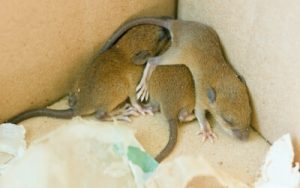
In one nest, the least number of mice you will find will be around 5. Like lots of other animal groups, there is only one male in a nest. The rest are always female.
How often do mice breed?
In the mice world, much like in the human world, the younger, stronger female has a better chance of producing a big litter. The number of young ones varies – from 4 to 16 pups per mother and one mouse can produce up to 10 litters a year in the right conditions.
When do baby mice leave the nest?
Male mice are usually the ones leaving the nest as they feel the need to make a new one. That occurs usually around twenty days after the babies are born. Female mice become reproductively mature at around five to six weeks after being born. After that, they are ready to continue with the cycle by giving birth to new pups.
Those are the main reasons why mice are so successful in breeding when compared to other mammals and animals in general. They reproduce almost impossibly quick and are fully capable to become a colony in a limited period of time. In other words, the pesky pests can take over your home before you even notice.
Best way to remove a mouse nest
What do you do if you find a mouse nest? The removal of a mouse nest involves several steps to ensure safety and prevent future infestations.
- To prevent direct contact with droppings, urine, and nesting materials, put on gloves, a mask, and protective clothing. To protect your eyes against dust or airborne particles, wear goggles.
- Do not sweep or vacuum the nest immediately, as this can spread harmful bacteria and viruses. Spray the nest with a disinfectant or a mixture of bleach and water (1 part bleach to 10 parts water).
- Carefully remove the nest and use a plastic bag or disposable paper towels to pick up the nest. Double-bag the nest and any contaminated materials before disposing of it in an outdoor trash bin.
- Clean the area thoroughly with a strong disinfectant and wash any contaminated fabrics or surfaces with hot water and soap.
- If baby mice are present, you may need to contact a mice control expert to remove them humanely.
- Inspect your home for gaps, cracks, and holes that mice could use to enter and seal these openings with steel wool, caulk, or metal mesh to prevent future infestations.
- Place mouse traps or bait stations near suspected entry points to catch any remaining mice.
These steps will help you safely remove the nest and reduce the chances of another mice infestation.
How to prevent mice from nesting in your house
The best way to discourage mice from achieving the home invasion of the century is to make your house as unattractive to them as possible. Taking in mind the nesting habits that we mentioned above, make sure that there are no conditions for them to form a nest and live there.
- Seal all your food in secure packages and always keep your kitchen clean. One mouse needs around 3 gr of food per day, so even the smallest amount is enough.
- Deny the cosiness of your garage by keeping it clean and regularly checking it along with your car engine for possible nests.
- You don’t need those old cardboard boxes, so just throw them away. If you need them to store some of your stuff, just choose some sort of a metal or strong plastic container. Something difficult to penetrate.
- If you have a closet full of old clothes, get rid of them. Any seasonal clothes you can keep somewhere rodent-proof, give them away or make some tapestry. Just don’t keep them unsecured, as they are the perfect nesting material for mice.
- Go around your house and check for possible entries like holes or cracks, especially around electrical outlets, pipes and the inside of your cabinets.
Read more: How to Get Rid of Mice in Your House
Does a mouse nest mean an infestation?
A mouse nest is a strong indicator of a mouse infestation. If you find a nest, it suggests that at least one mouse has settled in your home, and there could be more nearby. An inspection and treatment by a mice exterminator are recommended if you discover multiple mouse nests or extensive damage.
To determine if a mouse nest is currently active check for mouse droppings near the nest. Droppings from mice that are fresh and shiny are sure signs of an active infestation. A nest that has stored food around it is also an indication that the nest is currently in use.
As a commercial service provider we only aim to inform you about mice nests according to the professional experience of the pest technicians. However, we cannot guarantee that the above-mentioned advice on how to prevent mice nesting, will lead to successful results.




